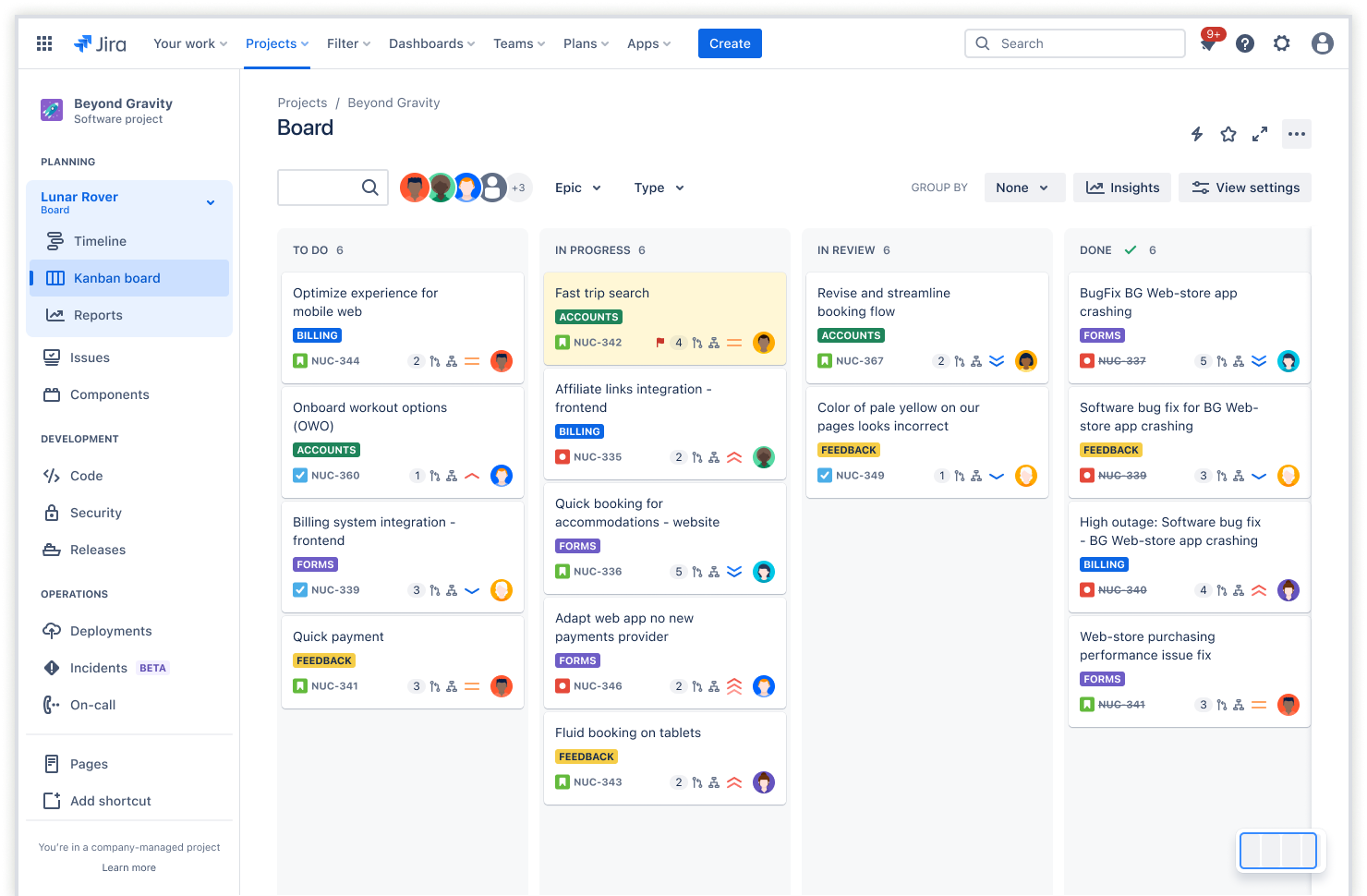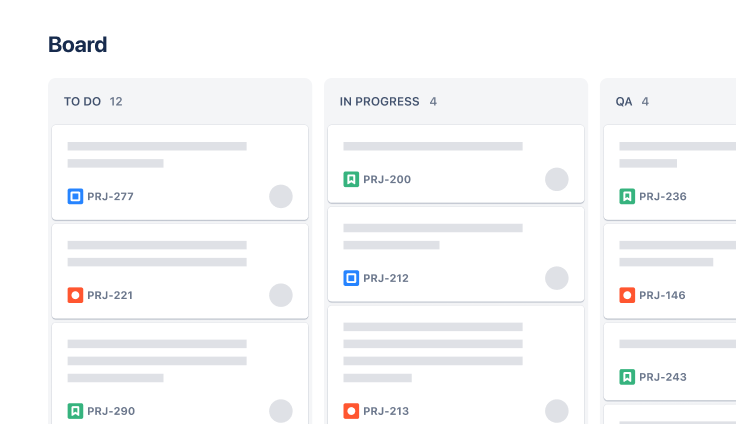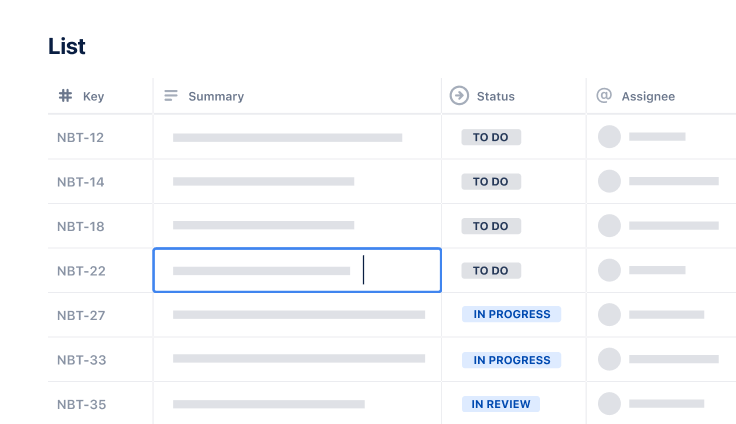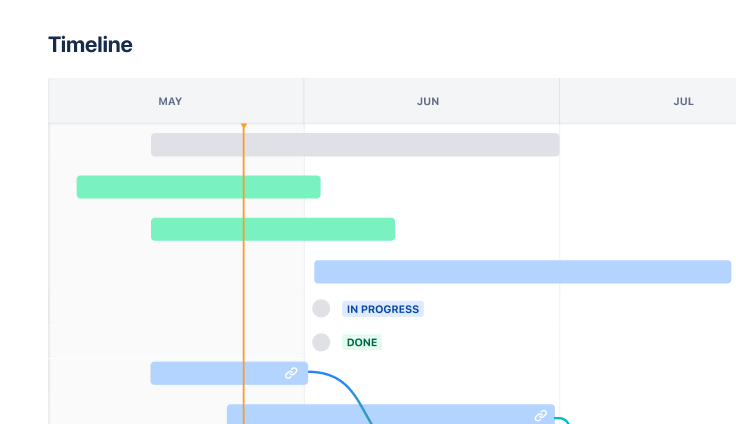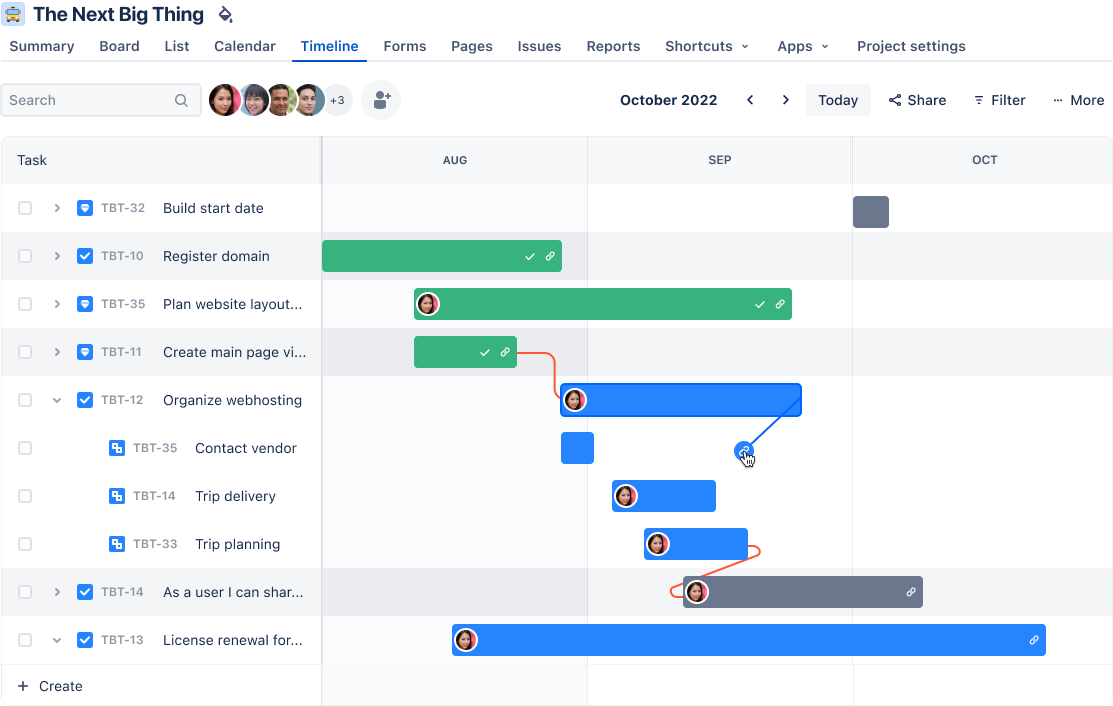
Gantt Chart Template
Jira’s Gantt chart template, also known as a timeline, is a powerful project management tool for visualizing project timelines, tracking progress, and managing dependencies.
What is a Gantt chart template?
A Gantt chart template is a visual project planning tool that outlines tasks, milestones, and deliverables. Project items are represented as bars on a horizontal timeline to indicate durations and due dates. The Gantt chart also indicates dependencies between tasks, milestones, and assignees.
What does the Gantt chart template include?
Gantt chart templates are powerful visualization tools that enable teams to track project work, avoid roadblocks, and facilitate better collaboration.
Workflows
One of Gantt chart's most powerful features is the ability to see dependencies between tasks. In Jira’s Gantt chart template, dependent tasks are automatically flagged so teams can stay on top of potential delays and pivot quickly.
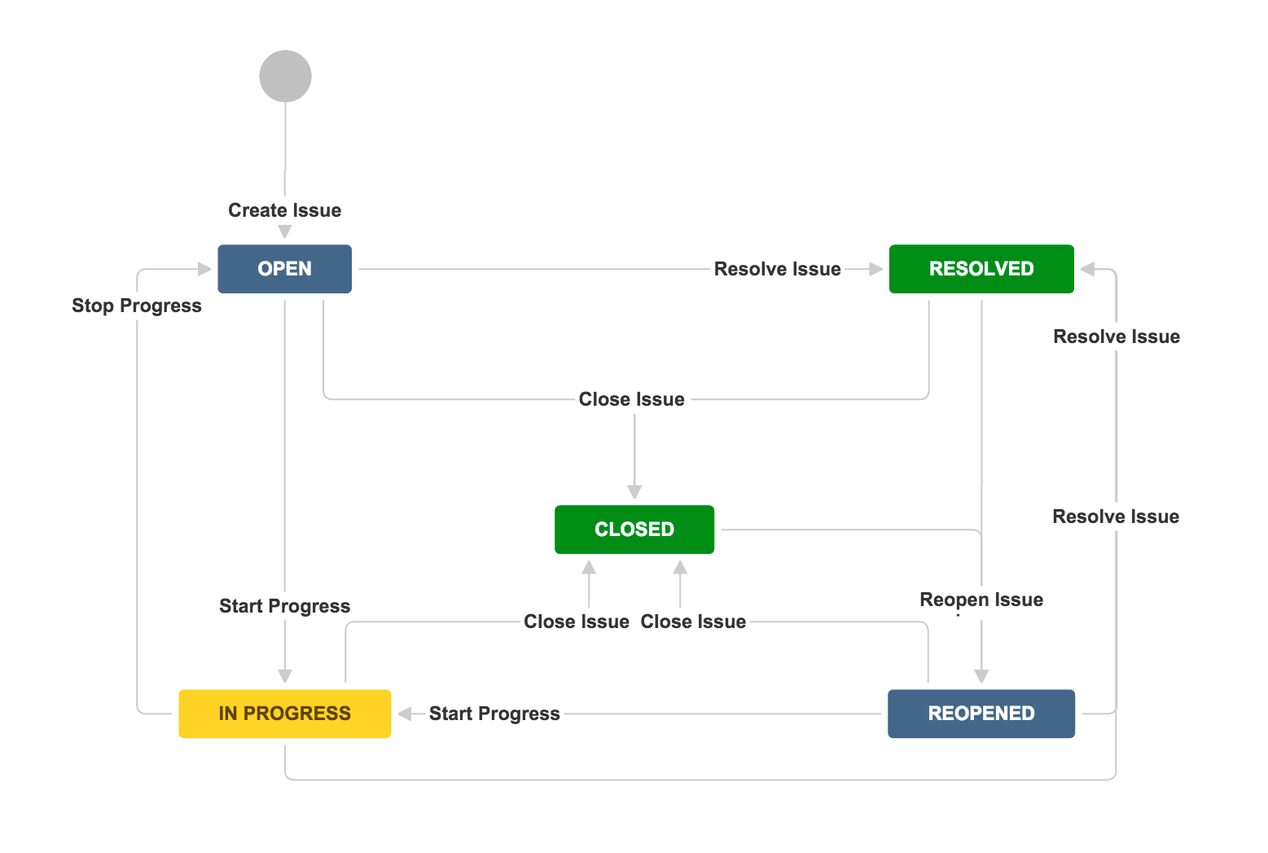
Timeline
Gantt charts give project managers, their teams, and stakeholders top-down visibility into work that’s been completed, work that’s in flight, and work coming down the pipeline.
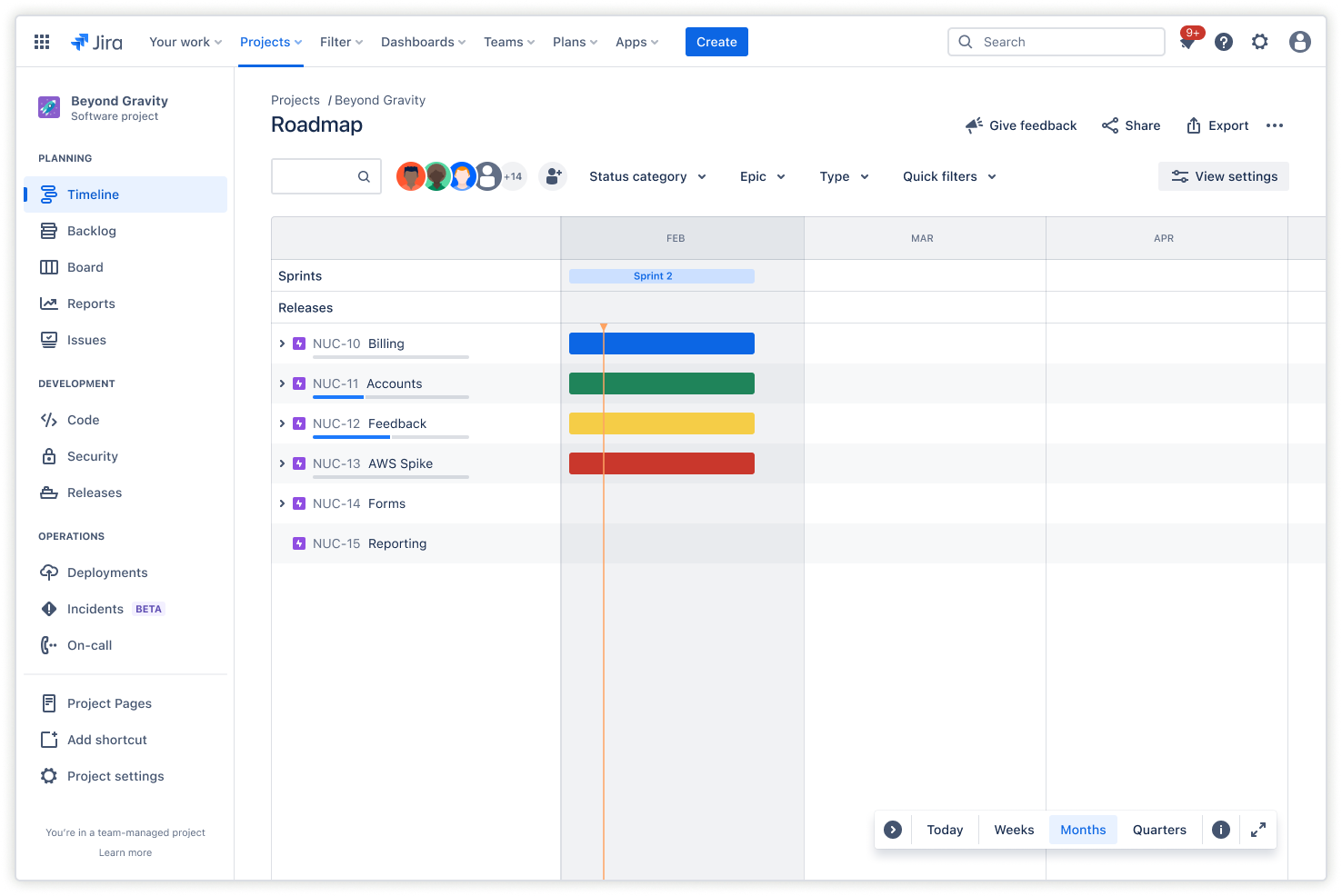
Backlog
Gantt charts make it easy for everyone on the team to see how individual tasks are tracking towards key milestones and deadlines in a single view.
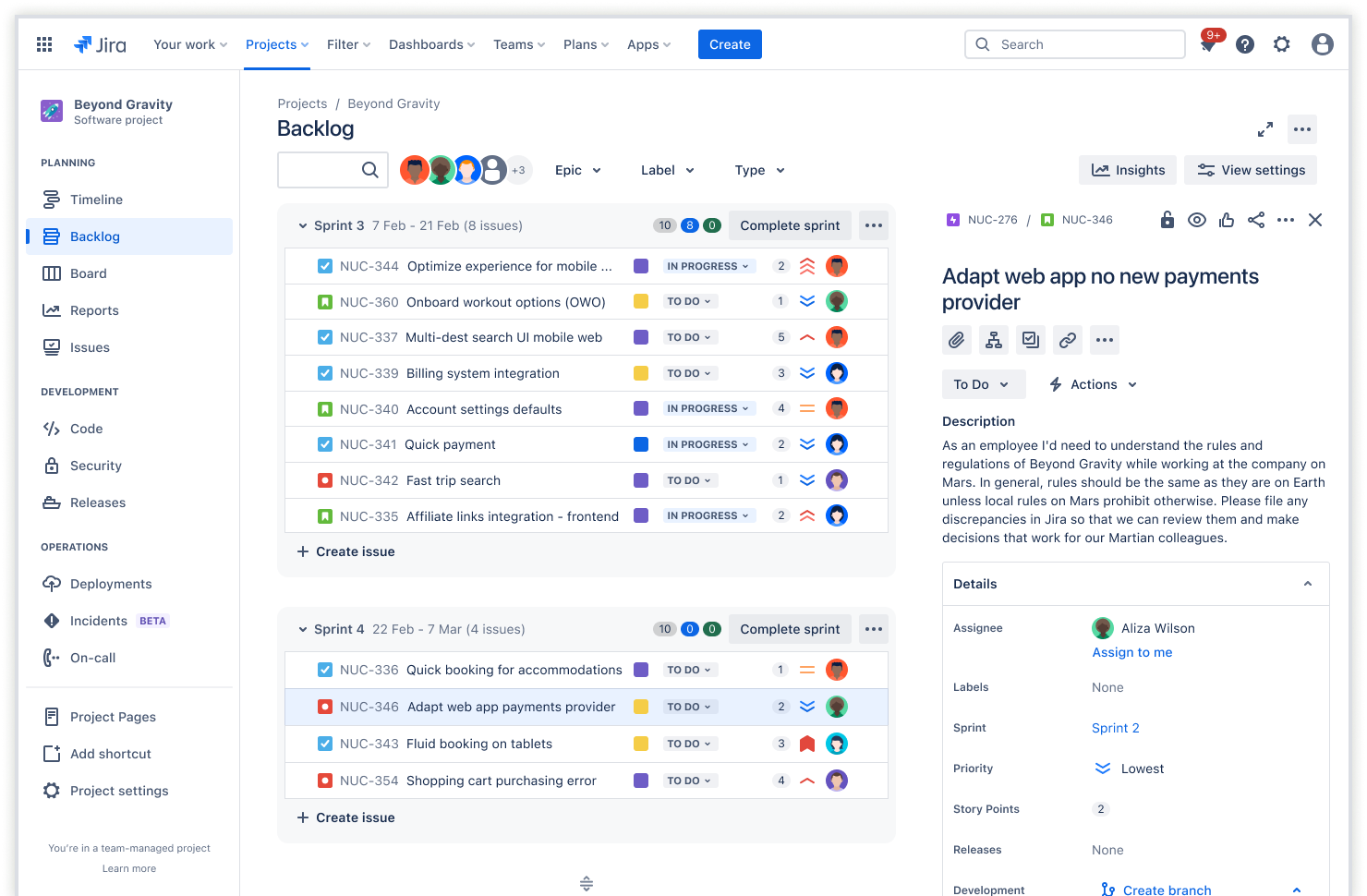
Board
Gantt charts are collaborative by nature, allowing team members to stay on top of their work while seeing how their tasks ladder up to larger goals. Jira’s Gantt chart template boosts collaboration by allowing teams to update task statuses, leave comments on tasks, and share files all in one place.
